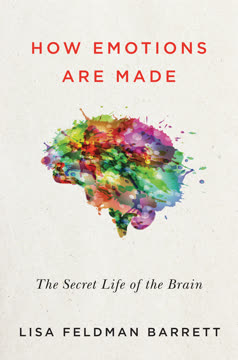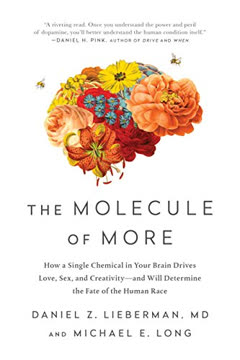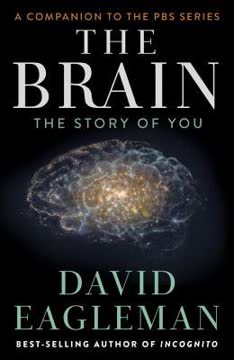نکات کلیدی
1. انعطافپذیری مغز امکان تطبیقپذیری و شکلگیری هویت ما را فراهم میکند
تمام تجربیات زندگی شما - از مکالمات فردی تا فرهنگ گستردهتر شما - جزئیات میکروسکوپی مغز شما را شکل میدهند.
انعطافپذیری عصبی کلیدی است. توانایی مغز انسان در بازسازی خود به ما امکان میدهد تا به محیطهای مختلف تطبیق پیدا کنیم و در طول زندگی یاد بگیریم. این انعطافپذیری در کودکی بیشتر مشهود است، جایی که مغز بر اساس تجربیات، اتصالات را شکل میدهد و هرس میکند. با این حال، این روند در بزرگسالی نیز ادامه دارد، هرچند با سرعتی کندتر.
تجربیات ما را شکل میدهند. هر تعامل، از مکالمات عادی تا غوطهوری فرهنگی، ساختار مغز ما را بهطور فیزیکی تغییر میدهد. این تغییر مداوم به این معناست که هویت ما ثابت نیست بلکه با انباشت تجربیات تکامل مییابد. انعطافپذیری مغز در موارد شدید، مانند کامرون موت که پس از برداشتن نیمی از مغزش بهطور عادی عمل میکرد، نشان داده میشود.
جنبههای کلیدی انعطافپذیری عصبی:
- هرس: مغز اتصالات استفادهنشده را حذف میکند
- تقویت: اتصالاتی که بهطور مکرر استفاده میشوند قویتر میشوند
- تطبیق: مغز میتواند در صورت نیاز وظایف را به مناطق مختلف اختصاص دهد
2. درک ما از واقعیت یک توهم ساختهشده است
مغز شما نمیداند و اهمیتی نمیدهد که اطلاعات از کجا میآید. هر اطلاعاتی که وارد میشود، مغز تصمیم میگیرد با آن چه کند.
واقعیت ذهنی است. آنچه ما بهعنوان واقعیت درک میکنیم در واقع مدلی است که بهدقت توسط مغز ما ساخته شده است. این مدل بر اساس ورودی حسی محدود و تفسیر مغز از آن ورودی است. حواس ما پنجرهای مستقیم به جهان ارائه نمیدهند بلکه نمایشی بسیار پردازششده ارائه میدهند.
جایگزینی حسی انعطافپذیری را نشان میدهد. آزمایشها نشان میدهند که مغز میتواند به دریافت اطلاعات از طریق کانالهای غیرمتعارف تطبیق پیدا کند. بهعنوان مثال، افراد نابینا میتوانند از طریق زبان یا پشت خود "ببینند" با استفاده از دستگاههای جایگزینی حسی. این نشان میدهد که درک ما از واقعیت ثابت نیست بلکه میتواند تغییر کند و گسترش یابد.
مثالهایی از واقعیت ساختهشده:
- رنگ در دنیای خارجی وجود ندارد، فقط در درک ما
- درک زمان میتواند در شرایط استرس بالا تحریف شود
- توهمات نوری تلاش مغز برای درک اطلاعات مبهم را نشان میدهند
3. فرآیندهای ناخودآگاه بر تصمیمگیری و رفتار غالب هستند
ما از تصمیماتی که بهجای ما گرفته میشود آگاه نیستیم.
ذهن ناخودآگاه حاکم است. بیشتر تصمیمات و اقدامات ما توسط فرآیندهای ناخودآگاه در مغز هدایت میشوند. این فرآیندها زیر سطح آگاهی ما عمل میکنند و رفتار، باورها و انتخابهای ما را بدون ورودی آگاهانه ما شکل میدهند. این چالش برانگیز است که مفهوم اراده آزاد و کنترل آگاهانه بر اعمالمان را به چالش میکشد.
خلبان خودکار و تخصص. بسیاری از وظایف پیچیده، پس از یادگیری، بهطور خودکار انجام میشوند و نیاز به تلاش آگاهانه کمی دارند. این منابع شناختی را آزاد میکند اما میتواند منجر به اقداماتی شود که از انجام آنها آگاه نیستیم. تخصص در یک مهارت اغلب شامل تفکر آگاهانه کمتر است، همانطور که تفاوت در فعالیت مغزی بین یک مبتدی و یک متخصص در انجام همان وظیفه نشان میدهد.
تأثیرات بر تصمیمگیری ناخودآگاه:
- آمادهسازی: نشانههای محیطی ظریف بر انتخابهای ما تأثیر میگذارند
- احساسات: احساسات درونی بسیاری از تصمیمات را هدایت میکنند
- تجربیات گذشته: خاطرات ذخیرهشده واکنشهای ما را شکل میدهند
- تعصبات: پیشداوریهای ناخودآگاه بر قضاوتهای ما تأثیر میگذارند
4. تعامل اجتماعی برای عملکرد مغز و بقای انسان حیاتی است
عملکرد طبیعی مغز به شبکه اجتماعی اطراف ما بستگی دارد. نورونهای ما برای رشد و بقا به نورونهای دیگران نیاز دارند.
انسانها ذاتاً اجتماعی هستند. مغز ما برای تعامل اجتماعی سیمکشی شده است، با مدارهای عصبی خاصی که به درک و ارتباط با دیگران اختصاص داده شدهاند. این طبیعت اجتماعی برای بقای انسان و توسعه جوامع پیچیده حیاتی بوده است.
انزوا به مغز آسیب میزند. کمبود تعامل اجتماعی میتواند منجر به ناراحتی روانی شدید و کاهش شناختی شود. درد طرد اجتماعی همان مناطق مغزی را فعال میکند که درد فیزیکی را فعال میکند، که اهمیت پیوندهای اجتماعی برای رفاه ما را نشان میدهد.
جنبههای کلیدی علوم اعصاب اجتماعی:
- نورونهای آینهای: به ما کمک میکنند تا اعمال دیگران را درک و با آنها همدلی کنیم
- نظریه ذهن: به ما امکان میدهد حالات ذهنی را به دیگران نسبت دهیم
- درد اجتماعی: طرد، مناطق پردازش درد مغز را فعال میکند
- پویایی گروه: تمایل به تشکیل گروههای درونی و بیرونی
5. فناوری و علوم اعصاب در حال همگرایی برای افزایش قابلیتهای انسانی هستند
ما دیگر یک گونه طبیعی نیستیم که باید برای تطبیقهای حسی در مقیاس زمانی تکاملی صبر کنیم. با حرکت به سوی آینده، ما بهطور فزایندهای در حال طراحی درگاههای حسی خود به جهان خواهیم بود.
افزایش حواس انسانی. پیشرفتهای علوم اعصاب و فناوری به ما امکان میدهد تا تجربیات حسی خود را فراتر از محدودیتهای طبیعی گسترش دهیم. از کاشت حلزون برای ناشنوایان تا دستگاههای تجربی که به ما امکان میدهند "دادهها را احساس کنیم"، ما وارد عصری از تجربیات حسی طراحیشده میشویم.
رابطهای مغز-ماشین. فناوری که امکان ارتباط مستقیم بین مغز و دستگاههای خارجی را فراهم میکند بهسرعت در حال پیشرفت است. این امکان را برای کنترل اندامهای مصنوعی با فکر یا حتی گسترش قابلیتهای فیزیکی ما فراتر از بدن انسان فراهم میکند.
مثالهایی از افزایش انسانی:
- دستگاههای جایگزینی حسی برای نابینایان
- پروتزهای کنترلشده با مغز برای قطع عضوها
- دستگاههای تجربی برای "احساس" جریانهای داده
- بهبودهای بالقوه آینده در حافظه و شناخت
6. آگاهی از تعاملات عصبی پیچیده پدیدار میشود
هر جا که نگاه کنید میتوانید سیستمهایی با ویژگیهای پدیدار پیدا کنید. هیچ قطعه فلزی در یک هواپیما ویژگی پرواز ندارد، اما وقتی قطعات را بهدرستی مرتب کنید، پرواز پدیدار میشود.
پدیداری آگاهی را توضیح میدهد. آگاهی احتمالاً یک ویژگی پدیدار است که از تعاملات پیچیده میلیاردها نورون در مغز ناشی میشود. مانند یک کلونی مورچه که از طریق اقدامات ساده فردی رفتار پیچیدهای نشان میدهد، آگاهی از فعالیت جمعی واحدهای عصبی ساده پدیدار میشود.
یکپارچگی و تمایز. نظریهها پیشنهاد میکنند که آگاهی نیاز به تعادل بین یکپارچگی (ارتباط گسترده در سراسر مناطق مغزی) و تمایز (توانایی نمایندگی حالات متمایز) دارد. این تعادل امکان تجربه غنی و یکپارچه آگاهی را فراهم میکند.
مفاهیم کلیدی در پژوهش آگاهی:
- همبستگیهای عصبی آگاهی
- نظریه اطلاعات یکپارچه
- نظریه فضای کاری جهانی
- مسئله سخت آگاهی
7. آینده ممکن است شامل جاودانگی دیجیتال و وجود غیرزیستی باشد
ما در لحظهای از تاریخ بشر هستیم که ازدواج زیستشناسی و فناوری ما از محدودیتهای مغز فراتر خواهد رفت.
بارگذاری آگاهی. فناوریهای آینده ممکن است به ما امکان دهند آگاهی خود را به زیرلایههای غیرزیستی منتقل کنیم، که ممکن است به شکلی از جاودانگی دیجیتال منجر شود. این میتواند مفهوم زندگی، مرگ و وجود انسانی ما را بهطور رادیکال تغییر دهد.
واقعیتهای شبیهسازیشده. اگر آگاهی بتواند بارگذاری شود، این امکان را برای وجود در جهانهای شبیهسازیشده یا حتی کاوش در کیهان با ارسال خودهای دیجیتال ما به سیارات دوردست فراهم میکند. این سؤالات فلسفی درباره ماهیت واقعیت و جایگاه ما در آن را مطرح میکند.
پیامدهای وجود دیجیتال:
- امکان طول عمرهای بسیار طولانی
- توانایی تجربه واقعیتهای متعدد
- ملاحظات اخلاقی آگاهی کپیشده
- امکان اینکه ما در حال حاضر در یک شبیهسازی زندگی میکنیم
آخرین بهروزرسانی::
FAQ
What's "The Brain: The Story of You" about?
- Exploration of the Brain: The book delves into the complexities of the human brain, exploring how it shapes our identity, perceptions, and interactions with the world.
- Understanding Human Experience: It examines how our brains create our reality, influence our decisions, and drive our social behaviors.
- Neuroscience for Everyone: David Eagleman presents neuroscience in an accessible way, aiming to bridge the gap between academic research and everyday life.
- Future of Humanity: The book also speculates on the future of human evolution and the potential for merging biology with technology.
Why should I read "The Brain: The Story of You"?
- Insightful Content: It provides a deep understanding of how the brain functions and its impact on our lives.
- Accessible Science: The book is written in a way that makes complex scientific concepts understandable to non-experts.
- Relevance to Daily Life: It connects neuroscience to everyday experiences, helping readers understand themselves and others better.
- Futuristic Perspective: Offers a thought-provoking look at the future of human evolution and technology.
What are the key takeaways of "The Brain: The Story of You"?
- Brain Plasticity: The brain's ability to adapt and change throughout life is a central theme, highlighting its role in learning and recovery.
- Social Nature of Humans: The book emphasizes the importance of social interactions and how they shape our brain and behavior.
- Reality Construction: It explores how our brains construct our perception of reality, often leading to illusions and misconceptions.
- Future Possibilities: Eagleman discusses the potential for technological advancements to enhance human capabilities and alter our understanding of identity.
How does David Eagleman explain brain plasticity in the book?
- Adaptability: Eagleman describes the brain as a "livewired" organ, constantly reshaping itself in response to experiences and environments.
- Childhood Development: He explains how the brain's wiring is particularly flexible during childhood, allowing for rapid learning and adaptation.
- Adult Plasticity: While less pronounced than in children, adult brains also exhibit plasticity, enabling learning and recovery from injuries.
- Implications for the Future: The concept of plasticity suggests potential for future enhancements through technology and new sensory experiences.
What is the significance of social interactions according to "The Brain: The Story of You"?
- Essential for Survival: Social interactions are crucial for normal brain function and human survival, as emphasized by Eagleman.
- Empathy and Understanding: The book explores how our brains are wired to empathize and understand others, which is vital for social cohesion.
- Impact of Isolation: Eagleman discusses the detrimental effects of social isolation on mental health, highlighting the brain's need for social connections.
- Group Dynamics: The book examines how group behavior and social structures influence individual brain function and decision-making.
How does "The Brain: The Story of You" address the concept of reality?
- Constructed Perception: Eagleman explains that our perception of reality is a construction of the brain, influenced by sensory inputs and past experiences.
- Illusions and Misconceptions: The book discusses how the brain can be tricked by illusions, revealing the subjective nature of reality.
- Role of Expectations: Our expectations and prior knowledge shape how we perceive the world, often leading to biases and errors.
- Implications for Understanding: Understanding the brain's role in constructing reality can help us better navigate our perceptions and interactions.
What does David Eagleman say about decision-making in the book?
- Complex Process: Decision-making is portrayed as a complex interplay of competing neural networks, each with its own goals and desires.
- Role of Emotions: Emotions play a crucial role in decision-making, providing quick summaries of situations to guide choices.
- Influence of the Unconscious: Many decisions are influenced by unconscious processes, highlighting the brain's hidden operations.
- Improving Decisions: Eagleman suggests that understanding these processes can lead to better decision-making strategies and societal policies.
How does "The Brain: The Story of You" explore the future of human evolution?
- Technological Integration: Eagleman speculates on the integration of technology with biology, potentially enhancing human capabilities.
- Sensory Augmentation: The book discusses the possibility of adding new senses to the human experience through technological advancements.
- Extended Lifespan: Eagleman explores the potential for extending human life and consciousness through scientific innovations.
- Ethical Considerations: The book raises questions about the ethical implications of altering human biology and identity.
What are the best quotes from "The Brain: The Story of You" and what do they mean?
- "Our brains are like snowflakes": This quote emphasizes the uniqueness of each individual's brain, shaped by personal experiences and environments.
- "We are works in progress": Eagleman highlights the ongoing nature of brain development and identity formation throughout life.
- "The brain is a relentless shape-shifter": This reflects the concept of brain plasticity, illustrating its ability to adapt and change.
- "We need each other": A reminder of the fundamental social nature of humans and the importance of social connections for brain health.
How does David Eagleman address the mind-body problem in the book?
- Neuroscientific Perspective: Eagleman explores the relationship between mental experiences and physical brain activity, challenging traditional dualism.
- Consciousness and Brain Activity: He discusses how consciousness emerges from complex neural interactions, rather than being separate from the brain.
- Impact of Brain Changes: The book examines how changes in brain structure or chemistry can alter personality and behavior, supporting a monistic view.
- Ongoing Mystery: While providing insights, Eagleman acknowledges that the mind-body problem remains one of neuroscience's greatest challenges.
What methods does "The Brain: The Story of You" suggest for enhancing brain function?
- Lifelong Learning: Eagleman advocates for continuous learning and mental challenges to promote brain health and plasticity.
- Social Engagement: Maintaining strong social connections is emphasized as crucial for cognitive function and emotional well-being.
- Physical Activity: Regular exercise is highlighted as beneficial for brain health, supporting memory and cognitive abilities.
- Technological Aids: The book explores the potential of technology to augment sensory experiences and cognitive capabilities.
How does "The Brain: The Story of You" relate to current neuroscience research?
- Cutting-Edge Insights: The book incorporates the latest findings in neuroscience, providing a contemporary understanding of brain function.
- Bridging Science and Life: Eagleman connects scientific research to everyday experiences, making complex concepts relatable and applicable.
- Future Directions: The book discusses emerging areas of research, such as brain-machine interfaces and sensory augmentation.
- Interdisciplinary Approach: Eagleman draws on insights from psychology, biology, and technology to present a holistic view of the brain.
نقد و بررسی
کتاب مغز: داستان تو بهطور عمده نظرات مثبتی را بهخود جلب کرده است و بهعنوان مقدمهای قابلفهم به علوم اعصاب شناخته میشود. خوانندگان از سبک نوشتاری جذاب ایگلمن و مثالهای جالب او تمجید میکنند. این کتاب به موضوعاتی مانند آگاهی، تصمیمگیری و رفتار اجتماعی میپردازد. برخی از خوانندگان معتقدند که برای افرادی که با علوم اعصاب آشنا هستند، عمق کافی ندارد. منتقدان به تکرار عبارات و سادهسازی مفاهیم پیچیده اشاره میکنند. بهطور کلی، این کتاب بهعنوان یک مقدمه سرگرمکننده در زمینه علوم مغز برای خوانندگان عمومی توصیه میشود، هرچند که ممکن است افرادی که به دنبال مطالب پیشرفتهتر هستند، ناامید شوند.
Similar Books













